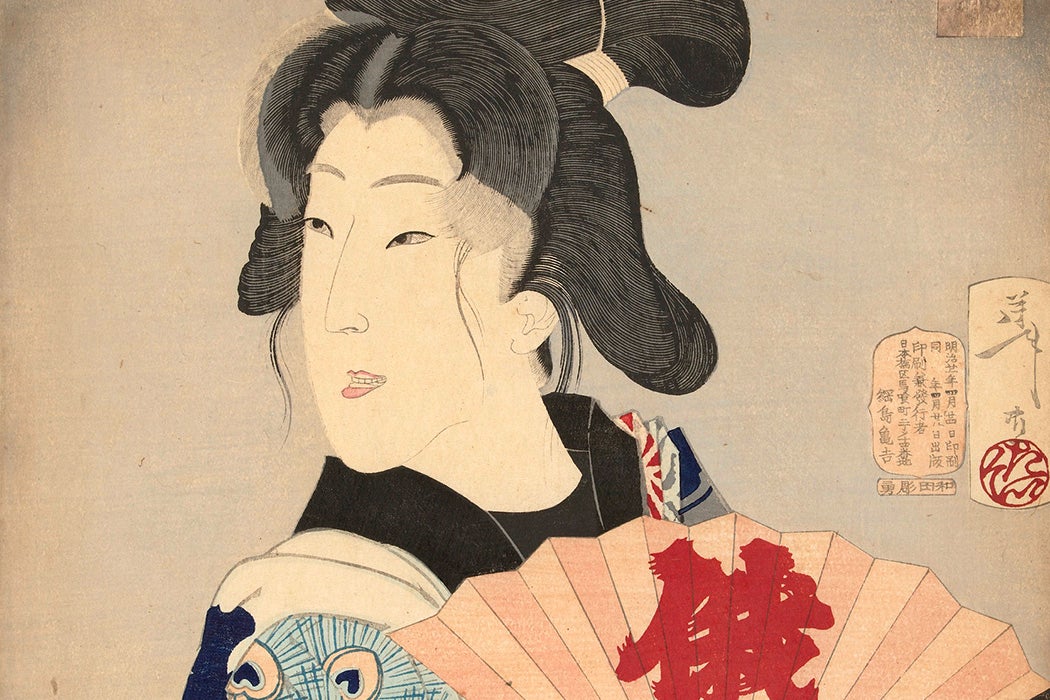In the Meiji era, Japanese elites worked to align the nation with “modern” ideas and norms, generally sourced from Europe and the United States. To many, this naturally meant supporting monogamy and delegitimizing sex work including the geisha tradition. But, as historian Amy Stanley writes, geisha and their employers attempted to harness modernism to their own advantage.
Stanley writes that the first geisha, in the early seventeenth century, were men who provided entertainment in Yoshiwara, the “pleasure quarter” of Edo. Around 150 years later, women who danced or performed as musicians began using the term to describe themselves. Most were indentured to geisha houses, and, alongside other forms of entertainment, they generally engaged in some form of sex work.
In the Meiji period, beginning in 1868, modernizers advocated for new approaches to both sex and work, opposing the nature of geisha’s offerings and also the indenture contracts under which they often worked. An 1875 official notice from the governor of Kobe Prefecture summed up a common attitude by declaring that “the decline of prostitution is the advance of enlightenment.”
Along with many male elites, some feminists saw geisha as an emblem of a backwards past. Educator Tsuda Umeko viewed geisha’s ability to gain status through their connections to male leaders as an impediment to the ability of “respectable” women to rise socially on their own merits. Activist Ishimoto Shidzue argued that geisha threatened monogamous marriages and perpetuated Western stereotypes of Asian women as submissive.
But, Stanley writes, geisha were not static remnants of a past era. Always known for being on-trend, the entertainers contributed to national uplift by reading up on current affairs, sewing police uniforms, and contributing to civic and educational projects.
In fact, the owners of geisha houses had long taken part in educational efforts, encouraging employees to read widely so that they could offer intellectual companionship to clients. In the early Meiji period, they extended this commitment to education, helping to establish schools for their own workers and for local children. New “schools of womanly arts” offered geisha and brothel workers training in “legitimate trades” including silkworm cultivation and cotton spinning. In keeping with a notion of domesticity that was also taking hold from the US to France to Turkey at the time, the schools also offered lessons in literature and art as preparation for becoming moral leaders for their future children.
Weekly Newsletter
Geisha also transformed their longstanding practice of financially supporting civic projects and religious shrines into PR-savvy charitable campaigns, receiving newspaper coverage and recognition from public officials that highlighted their beauty and sophistication.
However, Stanley writes, efforts to associate geisha with enlightened values were short-lived. By the 1880s, prevailing opinion increasingly viewed them as disreputable. Few politicians wanted their projects associated with them. And reformers no longer hoped to educate them for domestic success or respectable wage work, leaving schools in pleasure districts neglected and ineffective. By the turn of the twentieth century, geisha were firmly established as the polar opposite of “enlightened.”







